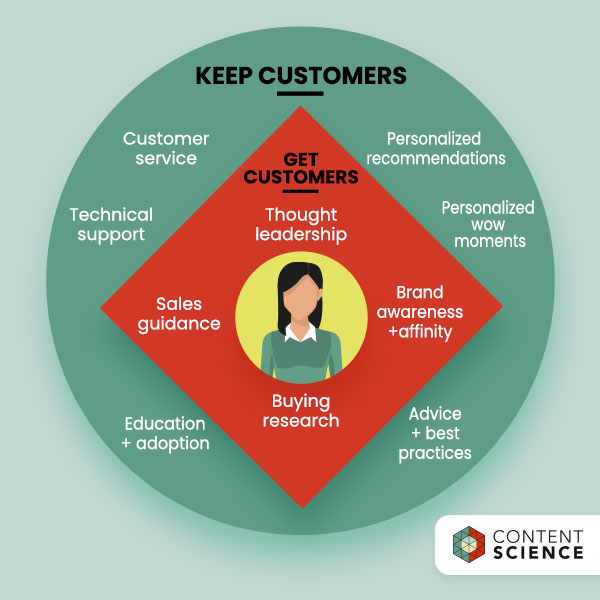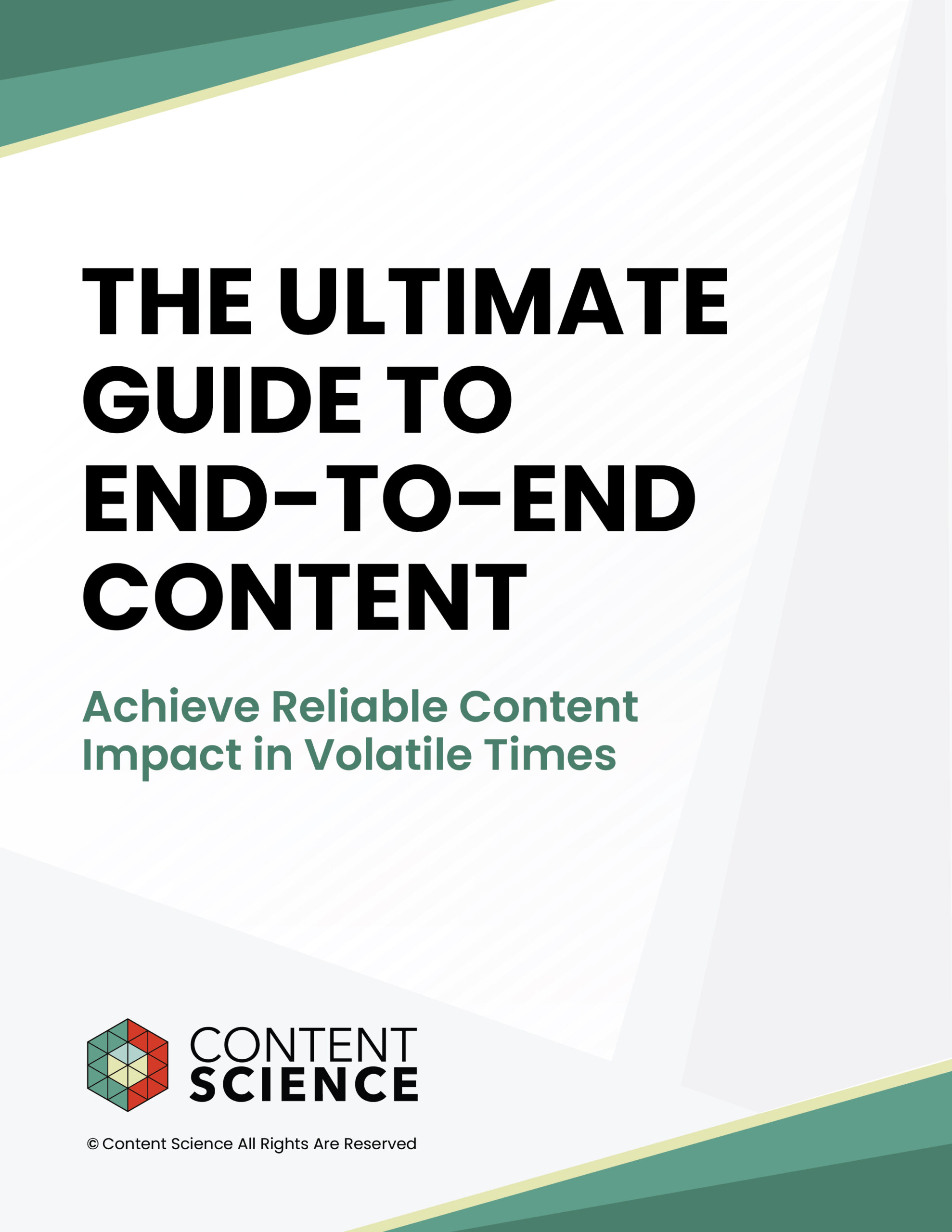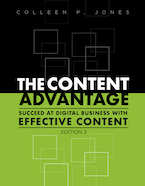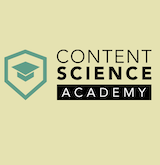
The content future is quickly becoming now. As organizations increase their spending on AI-driven digital transformation so they don’t join the mass extinction digital has caused, they are realizing (finally!) that content is a critical path. Digital business today depends on long-term, subscription-based relationships with customers. What mediates those relationships? Yes, content. The more effective the content, the better the digital business. That’s where having the right content roles comes in.

From these facts, we can extrapolate and discuss many implications. In this article, I’d like to focus on one: Essential content roles for enterprises who are serious about maturing their content approach for digital transformation and beyond. (Evaluate your own organization’s content maturity using our self-assessment tool.) Large and growing organizations need to deliver effective content to the right people at the right time at scale. It’s tough, if not impossible, to achieve that goal without these four content roles. So, I’m sharing an introduction.
Whether you seek to hire these content roles, evolve into one of these roles yourself, or work with people in these roles, I hope you find this introduction useful.
Content Roles
1. Content Strategist with a Competitive Mindset
This role isn’t new, but in many organizations it is still a vague term that’s come to encompass just about anything related to content. In a large organization, this role and others have to evolve to be more distinct. This role needs to focus truly on strategy, and an enterprise needs this role at different levels in the organization to focus on different aspects of that strategy. The Content Science team and I find an enterprise needs content strategy at these levels, at a minimum.
- Corporate: Content strategy and governance for content products, approaches, and technologies or platforms that cut across business units and solutions
- Business unit or geographic region: Content strategy for particular business areas or markets, which likely involve multiple solutions, products, or services
- Product / service / solution: Content strategy for specific customer experiences
Additionally, this role increasingly needs to take on a competitive mindset. We’re creating content-first experiences on which the organization’s survival and success depends. The stakes are high. So, competitive analysis with an eye toward winning is now essential to this role. To help bring sophisticated strategic thinking to this role, I adapted insights from the excellent book “Playing to Win: How Strategy Really Works” and turned them into a set of 5 strategic questions for winning content.
I discuss the questions extensively in The Content Advantage book and related workshops, but here I want to call out my favorite question: Where will we play? This question implies questions such as where can you compete on content and win? Where do you have no chance to compete?
The questions also force thinking through what the strategic opportunities are and aligning those opportunities with what you can execute. That means you have to think through whether and how the levels above align.
2. Content Analyst with Grounding in Data Science
As content automation and personalization kick into high gear with advances in artificial intelligence, machine learning, and natural language generation, data is increasingly important. A content analyst needs to love content and to love numbers. The content analyst uses data to inform ideas about what content to create, what content to deliver when, how to optimize content performance and SEO, and more.
So, large and growing organizations can’t afford to keep their content teams operating in a data desert, where just as water is hard to find in a desert, content-related data is hard to access, analyze, interpret, and act on. Large organizations need to devote people to establishing a system of content intelligence and to conducting these two types of content analysis: formative and evaluative.
3. Content Designer with Conversation Savvy
This role is both a distinction, and at the same time, a consolidation. In observing how content roles work in large organizations and in actually creating experiences for our own products, I don’t find separating interface design or information design and content (which usually ends up being writing some copy) useful. The layout, visual cues, microcopy, contextual help, and flow together add up to the experience, and the people creating the customer experience need to think holistically about it, together.
This holistic need will intensify as digital business demands more conversational and interactive experiences that anticipate customer questions and needs better than ever before. Intuit, for example, had a major win when they revamped TurboTax online (in response to desktop software facing extinction) with a highly responsive wizard experience guiding people through the process. The win was so big that Intuit attributes it to expanding not only Intuit’s share of the DIY (do it yourself) segment, but also to expanding the DIY segment itself.
I prefer the wording content designer over writer or editor because, unfortunately, the terms writer and editor are too easily misinterpreted as the person who fills in the copy after the experience is designed.
I also don’t find that a content strategist typically is effective in this role, so the role needs to be distinct from a content strategist. This role isn’t forming a content strategy. This role is creating an experience to carry out a strategy (or set of strategies). This role needs to understand and apply information design principles, influential content principles, interaction design principles, web writing principles, and much more to create the most effective experience possible.
4. Content Engineer Ready for Content Coding
The content engineer architects rules and more to enable dynamic, automated content creation, delivery, and management. It’s not hard to see how important this capacity is to scale content capacity efficiently. This role has exploded over the past six years. If you did a spot check on LinkedIn right now, you’d see more than 100,000 people with this title or a very similar one. That’s up from about 2,000 people in 2017.
This role tends to reside in large technology companies, some financial firms, and some media companies, which makes sense given those companies have had to support subscriptions and long term customer or audience relationships for years. But every enterprise will need this role.
A huge part of this role is modeling content, defining logic, defining taxonomies or controlled vocabularies, defining workflows, and essentially coding content with metadata.
Fly or Die
Together, the above four content roles will enable a large or growing organization to stop languishing in a digital caterpillar or cocoon state and transform. Let me share an interesting fact about caterpillars. If they can’t form a cocoon or can’t molt while in the cocoon, they don’t go back to being caterpillars. They don’t live life on the ground watching the butterflies wistfully. They die. The options are become a butterfly or become nothing.
Every organization today faces similar options. Delivering effective content to the right customers at the right time for a long subscription-based relationship is not a nice-to-have. It’s not an “extra” that might get you some competitive advantage or some fleeting attention for trying to be innovative. Those days are gone. Content is a core capacity essential to an organization’s survival now and the foundation for thriving later. Unlike a caterpillar, an enterprise can choose the option.
So, what will your choice be—fly or die?
Events, Resources, + More
The Ultimate Guide to End-to-End Content
Discover why + how an end-to-end approach is critical in the age of AI with this comprehensive white paper.
The Content Advantage Book
The much-anticipated third edition of the highly rated book by Colleen Jones is available at book retailers worldwide. Learn more!
20 Signs of a Content Problem in a High-Stakes Initiative
Use this white paper to diagnose the problem so you can achieve the right solution faster.
Upskill with Content Science Academy
Training for modern content roles through on-demand certifications + courses or live workshops.






Comments
We invite you to share your perspective in a constructive way. To comment, please sign in or register. Our moderating team will review all comments and may edit them for clarity. Our team also may delete comments that are off-topic or disrespectful. All postings become the property of
Content Science Review.